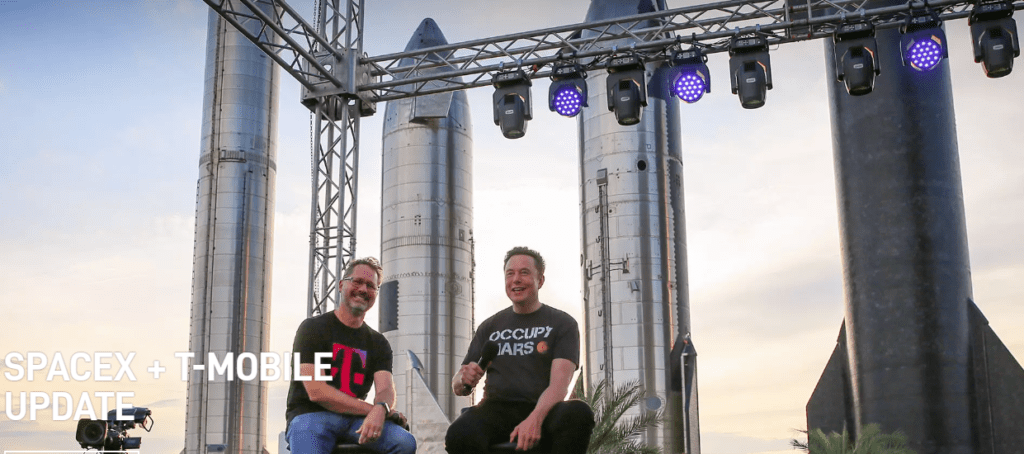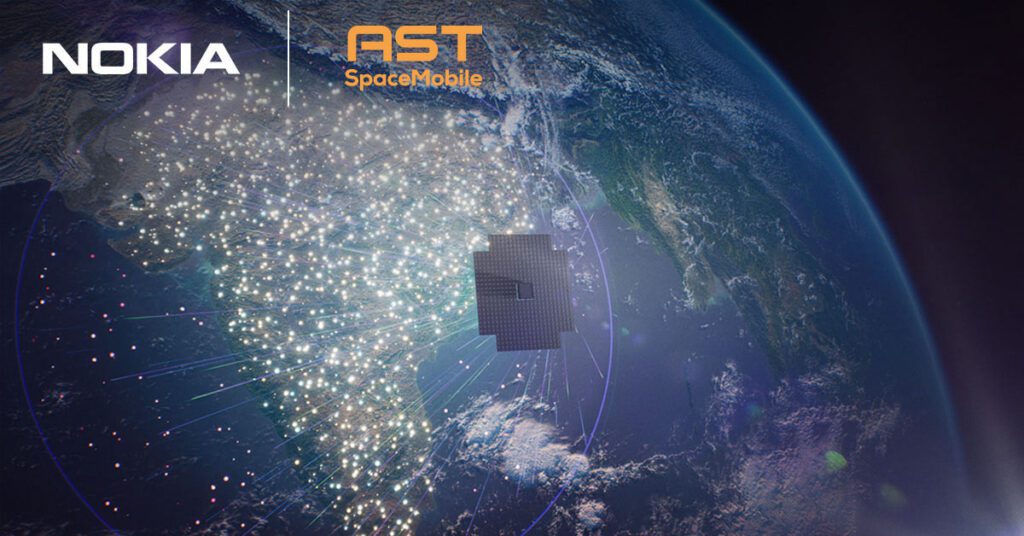
SpaceX Satellite to Cellular Service
True Satellite-to-Cellular Service by SpaceX and T-Mobile. The goal of SpaceX and T-Mobile is to beam cell service to “most sites in the US,” including those that traditionally have not been touched by wireless connectivity.
True Satellite-to-Cellular Service by SpaceX and T-Mobile
Dead zones are still a problem despite the fact that mobile coverage is constantly improving and expanding to more locations across the nation, giving higher speeds. They only serve to annoy and perplex customers who want their smartphones to “just work,” if anything. While SpaceX and T-Mobile are working together to try to permanently eliminate dead zones.
It is common knowledge that significant portions of the United States lack cellular or internet coverage. While typical broadband connections require networks of underground cables and cell service depends on towers that beam access across specific areas.
SpaceX’s Starlink has chosen a different approach to communication. Its connectivity is provided by clusters of satellites orbiting just a few hundred miles above Earth.

Watch SpaceX CEO Elon Musk and T-Mobile CEO and President Mike Sievert announce plans to increase connectivity.
T-Mobile Press Release on the Satellite-to-Cellular Service
Find below the excerpts from the Press Release
Today, despite powerful LTE and 5G wireless networks, well over half a million square miles of the U.S. in addition to vast stretches of ocean are untouched by cell signals … from ANY provider. And as anyone who has ever encountered a mobile dead zone knows, the wireless industry has struggled to cover these areas with traditional terrestrial cellular technology, most often due to land-use restrictions (e.g. National Parks), terrain limits (e.g. mountains, deserts, and other topographical realities) and America’s sheer vastness. In those areas, people are either disconnected or pay exorbitant rates to lug around a sat phone. SpaceX and T-Mobile share a vision where these uncovered areas are a relic of the past, and today, the companies are taking a first step to make that vision a reality.
From the middle of Death Valley to the Great Smoky Mountains or even that persistent neighborhood dead zone, T-Mobile and SpaceX have the vision to give customers a crucial additional layer of connectivity in areas previously unreachable by cell signals from any provider. And the service aims to work with the phone already in your pocket. The vast majority of smartphones already on T-Mobile’s network will be compatible with the new service using the device’s existing radio. No extra equipment to buy. It just works.
“The important thing about this is that it means there are no dead zones anywhere in the world for your cell phone,” said SpaceX Chief Engineer Elon Musk. “We’re incredibly excited to do this with T-Mobile.”
With this technology, T-Mobile is planning to give customers text coverage practically everywhere in the continental US, Hawaii, parts of Alaska, Puerto Rico, and territorial waters, even outside the signal of T-Mobile’s network starting with a beta in select areas by the end of next year after SpaceX’s planned satellite launches. Text messaging, including SMS, MMS, and participating messaging apps, will empower customers to stay connected and share experiences nearly everywhere. Afterwards, the companies plan to pursue the addition of voice and data coverage.

SpaceX Subsidy by Federal Communication Commission
The announcement was made just two weeks after federal officials said SpaceX would not be receiving the nearly $900 million in subsidies that it had been given in December. They cited the fact that the company’s satellite-based service is “still developing technology” and that it “failed to demonstrate that SpaceX could deliver the promised service” as the reason for their decision.
As part of its largest-ever subsidy program, the Federal Communications Commission has set aside money for SpaceX’s Starlink internet service. Three out of five Americans in rural America think access to high-speed internet is still an urgent problem.
One of the largest portions of the $9 billion that was auctioned off, or a total of $856 million, was allocated to SpaceX
.According to SpaceX, the corporation has more than 400,000 customers worldwide and has invested much in expanding its service. Nearly 3,000 satellites have already been launched, and they all work together to beam internet access to the ground. That differs greatly from conventional high-speed internet, which is supported by subterranean fiber optic lines.
SpaceX’s satellite-based internet business, Starlink, has approval from the US government to expand its service to planes, ships, automobiles, RVs, and other mobile vehicles.
![The locations of 87 planned and active Starlink ground station and their coverage assuming 0 = 40 • [17]. The locations of the ground stations are substantiated by filings with the Federal Communications Commission [18] in the USA, República De Chile Ministerio De Transportes Y Telecomunicaciones Subsecretaría De Telecomunicaciones [19] in Chile, Autorité de Régulation des CommunicationsÉlectroniquesCommunications´CommunicationsÉlectroniques et des Postes [20] in France, the Office of Communications in the UK [20], the Australian Communications and Media Authority [21] and the Ministry of Business, Innovation & Employment, Radio Spectrum Management [22] in New Zealand. All latitudes and longitudes are approximate (correct at the town/city level). Setting 0 = 40 • gives a visibility range of d = 812 km.](https://www.researchgate.net/publication/361921612/figure/fig2/AS:1176901662048266@1657606630912/The-locations-of-87-planned-and-active-Starlink-ground-station-and-their-coverage.png)
Other Satellite to Cellular Networks
AST Space Mobile is another company that is vying to enter the Satellite to Cellular Network.
AST & Science and our global partners are building the first and only space-based cellular broadband network to be accessible by standard smartphones. Called SpaceMobile, this ultra-powerful network is being designed to provide connectivity at 4G/5G speeds everywhere on the planet – on land, at sea, and in flight.
For the first time ever, mobile subscribers will be able to automatically roam from a land network to a space network. Whether in the most remote location, on rural farmland, or in the midst of a crisis or natural disaster, people will remain connected no matter what – without having to invest in expensive, specialized hardware.
Worldwide Satellite to Cellular Networks
Mike Sievert, CEO of T-Mobile, shared their vision for expanding Coverage Above and Beyond globally, issuing an open invitation to the world’s carriers to collaborate for truly global connectivity. T-Mobile is committed to offering reciprocal roaming to those providers working with them to enable this vision.
AST SpaceMobile, Inc., the company building the first and only space-based cellular broadband network accessible directly by standard mobile phones, has announced that they have signed a five-year 5G deal with Nokia. Under the deal, Nokia and AST SpaceMobile will work to achieve their joint ambition to expand universal coverage and connect underserved communities around the world. The planned launch of AST Space Mobile’s BlueWalker 3 test satellite later this year will kick off global testing with mobile network operators on six continents.

More Trending News on this site: Plant-Based Milk: Your Best Investing Option. Most Valuable Metro Railway in the World
shop nowUp To $40 Off Sitewide With Code: Summer40!



